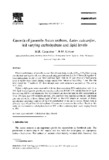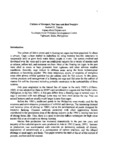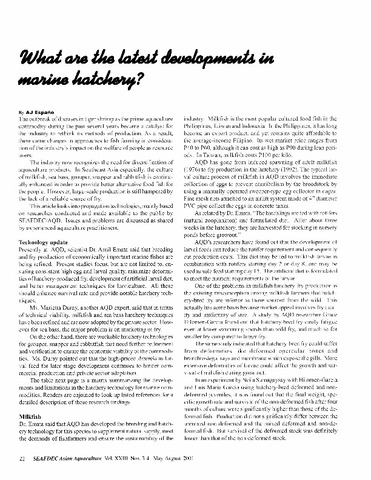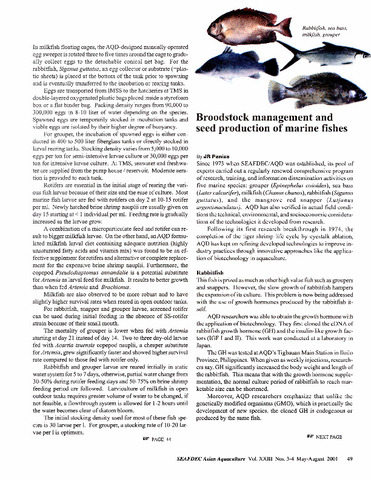Growth of juvenile Asian seabass, Lates calcarifer, fed varying carbohydrate and lipid levels
Share
Abstract
Growth performance of juvenile seabass (initial mean body weight, 0.90 ± 0.04 g) fed varying carbohydrate and lipid levels were determined using practical diets in a 2 × 3 factorial experiment. Two carbohydrate levels (15 and 20%) and three lipid levels (6, 12 and 18%) at a fixed protein level of 42.5% were tested. Dietary energy ranged from 284 to 412kcal 100g−1 diet. The fish were reared for 12 weeks in 601 flow-through tanks with aeration in seawater at 32%. and at 26.5–29 °C.
Higher weight gains were observed in fish fed diets containing 20% carbohydrate with 12 or 18% lipid. Lowest specific growth rate was observed in fish fed the 15% carbohydrate at 6% lipid. Survival was 100% in all treatments. The feed conversion ratios for fish fed 20% carbohydrate at 12 or 18% lipid, and 15% carbohydrate with 12% lipid were best. Specific growth rate and weight gain did not differ at lower dietary lipid (12-6% or 18-12%) despite an increase of dietary carbohydrate indicating a sparing of lipid by carbohydrate as an energy source. Dietary lipid at 18% (1:1 ratio of cod liver oil and soybean oil) seems to be excessive for seabass. Based on this study, we recommend a carbohydrate level of 20% in diets containing lipid levels ranging from 6 to 18%.
Suggested Citation
Catacutan, M. R., & Coloso, R. M. (1997). Growth of juvenile Asian seabass, Lates calcarifer, fed varying carbohydrate and lipid levels. Aquaculture , 149(1-2), 137-144. https://doi.org/10.1016/S0044-8486(96)01432-9
Subject
Taxonomic term
Collections
- AQD Journal Articles [1249]
Related items
Showing items related by title, author, creator and subject.
-
Culture of grouper, sea bass and red snapper
Toledo, Joebert D. (University of the Philippines Aquaculture Society, Inc., 2001)Marine fish production has increased dramatically in the past ten years and majority of the cultured species were produced in Asia in 1992. Increase in production was accompanied with concerns on increasing outbreak of ... -
What are the latest developments in marine hatchery?
Españo, A. J. (Aquaculture Department, Southeast Asian Fisheries Development Center, 2001) -
Broodstock management and seed production of marine fishes
Paniza, J. R. (Aquaculture Department, Southeast Asian Fisheries Development Center, 2001)




